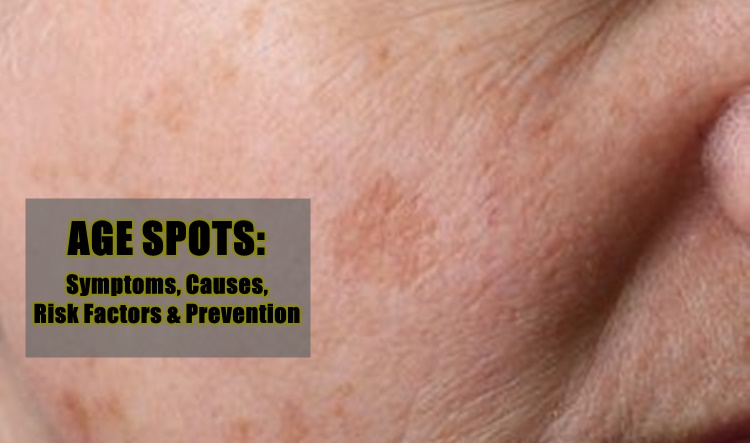Here are the symptoms, causes, risk factors, and ways to prevent age spots
AGE SPOTS – This condition is also called liver spots and solar lentigines which is characterized by small dark areas on your skin.
Usually, the spots appear on the face, hands, shoulders, and arms or on areas most exposed to sun and may vary in size. This condition is most common in adults aging older than 50. However, younger people can acquire this also if they are frequently under the sun.

SYMPTOMS
- Are flat, oval areas of increased pigmentation
- Are usually tan, brown or black
- Occur on the skin that has had the most sun exposure over the years, such as the backs of hands, tops of feet, face, shoulders and upper back
Age spots are common to people with lighter skin color and it can range from freckle size to about a 1/2 inch (13 millimeters) across. In some cases, they group together and this makes them more noticeable.
CAUSES
This is caused by overactive pigment cells and the ultraviolet (UV) light accelerates the production of melanin. The spots appear when melanin becomes “clumped” or is produced in high concentrations on the part of the skin which has prolonged sun exposure over the years. Aside from this, commercial tanning lamps and tanning beds can also be a cause of the production of spots.
RISK FACTORS
- Have red hair and light skin
- Have a history of frequent or intense sun exposure or sunburn
PREVENTION
- Avoid the sun between 10 a.m. and 2 p.m. because the rays are most intense during this time.
- Use sunscreen fifteen to 30 minutes before going outdoors. It is better to use a sunscreen with a sun protection factor (SPF) of at least 30 and reapply every two hours or more often if you’re swimming or sweating.
- Cover up for protection from the sun. You can wear tightly woven clothing that covers your arms and legs and a broad-brimmed hat. Furthermore, there is a certain kind of clothing designed to provide sun protection. You may also try the clothes labeled with an ultraviolet protection factor (UPF) of 40 to 50.
You may consider seeing your doctor if you have these following spot signs, according to the article from Mayo Clinic:
- Is darkly pigmented
- Is rapidly increasing in size
- Has an irregular border
- Has an unusual combination of colors
- Is accompanied by itching, redness, tenderness or bleeding
READ ALSO: DRY SKIN: Best Soaps You Can Use To Moisturize Dry Skin
